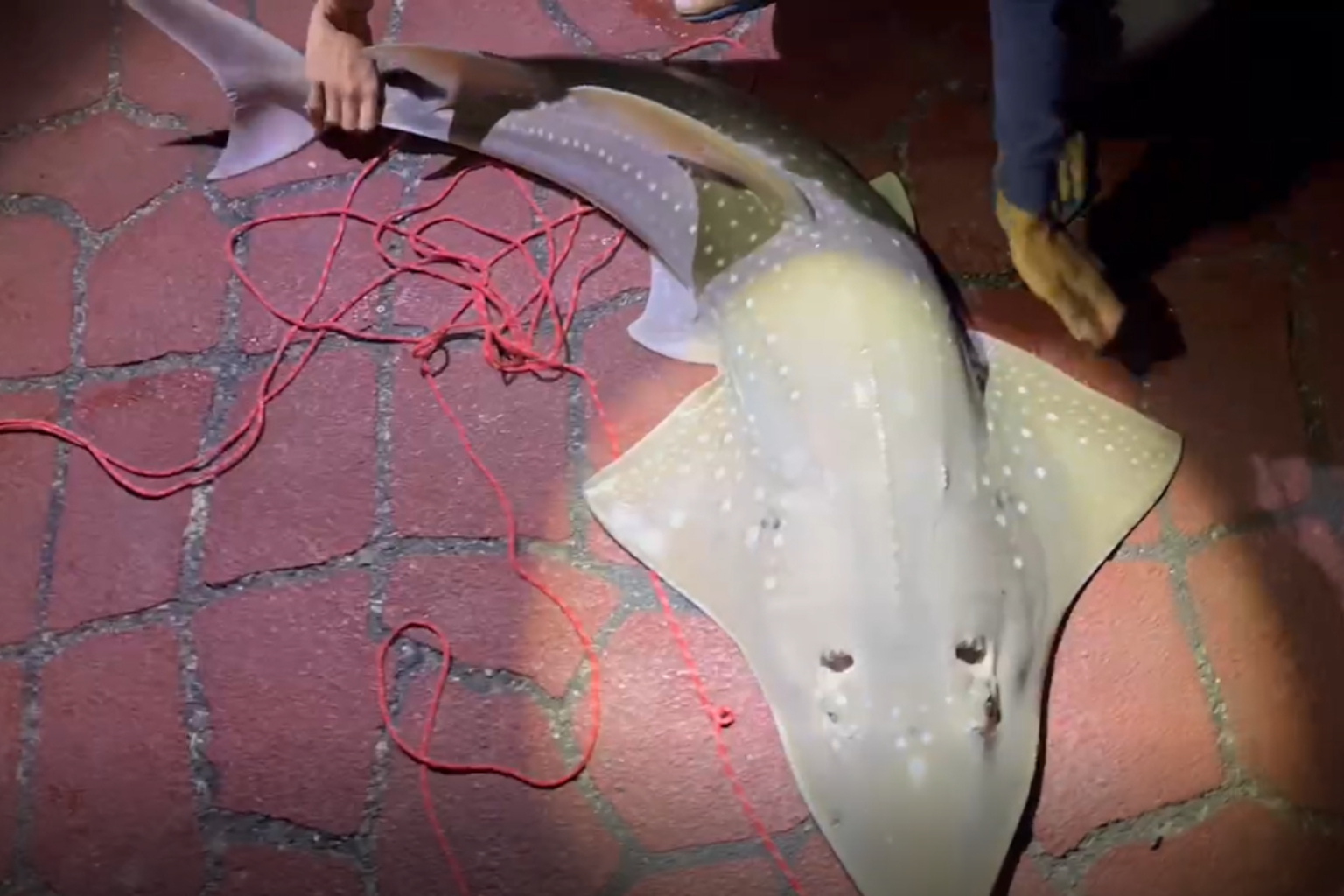Duo catch critically endangered fish at Bedok Jetty, release it back
Sign up now: Get ST's newsletters delivered to your inbox

The ray is estimated to be about 1.8m long and weighs around 25kg.
PHOTO: SCREENGRAB FROM MUHAMMAD SHABREE
Follow topic:
SINGAPORE - Catching a rarely seen shovelnose ray was a dream come true for two fishing enthusiasts.
But they were even happier when they let the critically endangered ray get away.
On Sunday night (Jan 16) at Bedok Jetty, Mr Teo Xue Shen and Mr Ho Song Thye reeled in the fish, which is sighted about six to 10 times a year along the Singapore coastline.
Said Mr Teo: "We've been discussing this catch for at least six years and it was honestly by luck that we caught it."
Mr Ho added: "At first, we thought it was a stingray because of the movement of the fish."
Rather than feeling elated after recognising their 1.8m-long dream catch, the 23-year-olds grew worried about injuring the Singapore native over the 6½ minutes that they took to haul it in.
Said Mr Teo, a third year environmental studies student at the National University of Singapore: "We were more preoccupied with getting the fish back in the water because we didn't want to hurt it any more than necessary to get it up and remove the hook."
Despite the ray being prized as a delicacy known as "shark head", they did not hesitate to release the ray (Rhynchobatus australiae) weighing about 25kg, because of its critically endangered status.
Their ethos of marine conservation dates back to 2019, they said, based on research about sustainable fishing practices for their YouTube channel Jives Fishing. To date, the channel has more than 5,800 subscribers.
Said Mr Ho, who is in the same course as Mr Teo: "We want to encourage people to release endangered, juvenile and undersized fishes to allow future generations to experience the same kind of fishing that we do. I feel that it is selfish if we don't preserve what we have for our kids and grandkids, so I think it is important for us not to be tempted by short-term rewards."
A spokesman for conservation group Marine Stewards said that on average, shovelnose rays are known to mature at about 1.5m so the fish that the duo caught is likely to be an adult.
Their release of the ray comes after the non-profit organisation introduced sustainable fishing guidelines in 2020 to reduce the impact of recreational fishing on marine life. Anglers are urged to, for instance, release juvenile fish back into the water and avoid taking critically endangered species.
The spokesman said: "It is heartening to see a younger generation of fishermen understand that their actions impact the sustainability of marine resources for future generations."
Since August 2019, protection of shovelnose rays, also known as bottlenose wedgefish, has had more regulatory teeth after the species was added to Appendix II of the Convention on International Trade in Endangered Species of Wild Fauna and Flora (Cites).
This means that its sale has to be controlled.
Singapore is a signatory to Cites, which is implemented and enforced here by the National Parks Board.
According to the Cites website, an export permit for Appendix II species will be issued only if the specimen has been legally obtained, and if the export will not be detrimental to the survival of the species.
Fishing is also not allowed at the Sisters' Islands Marine Park, Sungei Buloh Wetland Reserve, Labrador Nature Reserve rocky shore, Chek Jawa wetlands, and the waters around Coney Island Park.
Offenders can be fined up to $50,000 for fishing in these nature reserves.
Cites regulations, however, do not ban the trade of the species if it is sold in the local market, or govern the fishing of the shovelnose ray in domestic waters.

